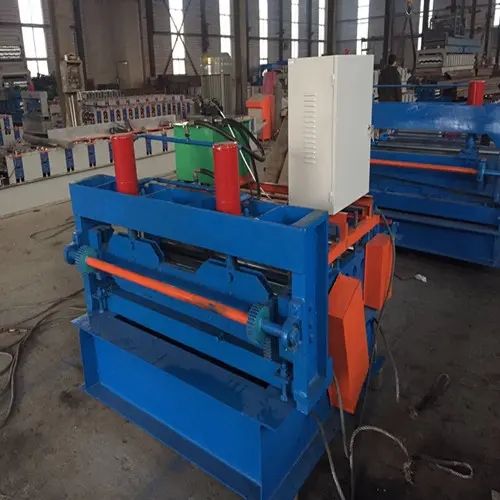
The Rise of Galvanized Ridge Cap Machine Manufacturers
In recent years, the construction and roofing industries have witnessed significant innovations, particularly with the introduction of advanced machinery designed to enhance efficiency and production quality. Among these, galvanized ridge cap machine manufacturers have emerged as pivotal players, recognized for their pivotal role in the fabrication of roofing materials. This article delves into the importance of galvanized ridge cap machines, the manufacturing process, and the key players in the industry.
What is a Galvanized Ridge Cap?
A galvanized ridge cap serves as a crucial component in roofing systems. It is a protective cover placed at the top of the roof, designed to prevent water penetration and protect the ridge of the roof from the elements. Made from galvanized steel, these caps are resistant to rust and corrosion, ensuring longevity and durability. The effective use of galvanized ridge caps not only enhances the aesthetic appeal of a building but also contributes significantly to its structural integrity.
The Manufacturing Process
The production of galvanized ridge caps typically involves several key steps, in which specialized machinery plays a fundamental role. The manufacturing process can be summarized as follows
1. Raw Material Preparation The first step involves selecting high-quality galvanized steel sheets, which are crucial for ensuring durability and resistance against environmental factors.
2. Cutting and Forming The steel sheets are then fed into the ridge cap machine, which is equipped with cutting and shaping tools. These tools cut the sheets into the desired dimensions and automatically form them into the correct shape, often with a roll-forming process that maintains precision and uniformity.
3. Punching and Slotting Many ridge cap machines also incorporate mechanisms that punch holes and slots into the formed caps. This is essential for facilitating proper fastening during installation, ensuring that the caps adhere securely to the roofing structure.

4. Quality Control After the caps are formed, they undergo rigorous quality control checks to ensure they meet industry standards for durability, finish, and dimensions. This step is crucial in maintaining the high quality expected by customers and regulatory bodies alike.
5. Packaging and Distribution The finalized ridge caps are then packaged for shipment to suppliers or directly to construction sites, where they will play a critical role in roofing assembly.
Key Manufacturers in the Industry
The demand for galvanized ridge caps has led to the emergence of numerous manufacturers specializing in this niche. Some of the most prominent manufacturers are recognized globally for their quality machinery and innovative technology. Here are a few notable players in the market
- European Manufacturers Many European companies are at the forefront of galvanized ridge cap machine production, known for their advanced technology and commitment to quality. These manufacturers often integrate automation in their equipment, reducing labor costs and minimizing human error.
- Asian Manufacturers Countries like China and India have seen a surge in manufacturers producing galvanized ridge cap machines at competitive prices. These manufacturers focus on affordability while ensuring quality, making them appealing options for many businesses.
- North American Manufacturers Several North American firms have established themselves by providing robust and reliable ridge cap machines that cater to local market needs. They often emphasize customer service and after-sales support, which are crucial for maintaining long-term relationships with contractors and builders.
Conclusion
In conclusion, galvanized ridge cap machine manufacturers play an integral role in the roofing industry, contributing to the efficient production of essential roofing materials. The innovative machinery they produce not only meets the growing demand for quality roofing solutions but also enhances the overall effectiveness of construction projects. As the construction sector continues to evolve, these manufacturers are expected to adopt even more advanced technologies, further shaping the future of roofing solutions worldwide. With a focus on sustainability and efficiency, the industry remains on a promising trajectory, setting new standards for quality and reliability in the years to come.